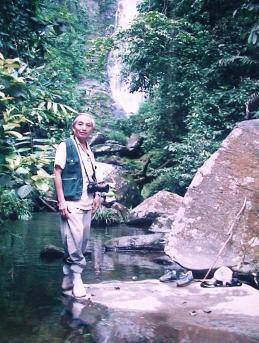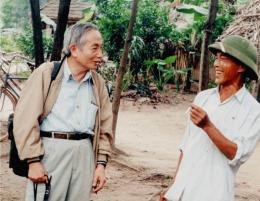28/02/2014
Encouraging local people involvement in conserving biodiversity - Vo Quy -
Biodiversity is a base on which Vietnam can exist, develop, and satisfy the daily need of people of both present and future generations. However, instead of conservation and rational use of this specious resource, people in many localities have exploited the resource excessively in the name of economic development. So the natural ecosystems, especially forest, and its biodiversity has been experiencing degradation seriously, damaging the country’s ability of socio-economic development.
The cause of forest loss is poverty and rapid population growth. Forest and forest resources as they say in Vietnam are “the bowl of rice for the poor”. Prohibiting hungry people to take the “unique bowl of rice” in front of them is not possible, and even not permissible from the point of view of humanity. The reasonable way for conservation is how to provide another “rice bowl” which could replace that “unique bowl of rice” for the hungry and poor. Demarcation of boundaries, patrolling by guards, penalty, confiscation, etc… will not deter them from encroachment. New systems and new ideas are needed to bridge the gap between the immediate need of the people and the long-term objectives of natural conservation. Cooperation with local residents and recognition their needs is a more effective means of protection than education and law enforcement.
In order to implement that idea, before the establishment of the Ke Go Nature Reserve, in 1992 we have begun a project entitled “Ke Go Forest management” for one commune and then in 1995 extended to seven communes of the area. In order to motivate local people to protect their forest and its wildlife, to save endangered species, it is necessary to find ways to upgrade their economic situation and maintain their cultural life, in which participatory elements of local people, as well as local authorities at village, commune and district level are highlighted. This was done by improving their knowledge on the effects of forest on sustainable development, by transferring new techniques in rice planting and agro-forestry, and by helping them to setup nurseries, to organize home gardens, animal husbandry, setting mini-hydroelectric power plants, saved fuel-wood cooking stoves etc…This is needed to train local people how to design and manage their forest and its wildlife, and demonstrate how they can sustainable manage their natural resources in order to reduce pressure on the area.
After seven years, the project has already had notable success, the residents of the communes have been conscious that the forest has brought practical benefits for them, and they actively take part in forest restoration and conservation.
Ke Go project, in fact, is not only an environmental or ecological scientific study, it is also a practical example of the solution of the issue of sustainable development realized by local communities themselves in close cooperation with authorities and researchers, who have the understanding of the real situation of the area and its people.
This paper deals with a question, that it is necessary to find ways of putting local people, even the poor people back into conservation.
(Vo Quy, Vietnam National University, Ha Noi, The MIDORI Prize 2012 Winner)
Related News: “Environmental hero” devoted to both science and charity"












